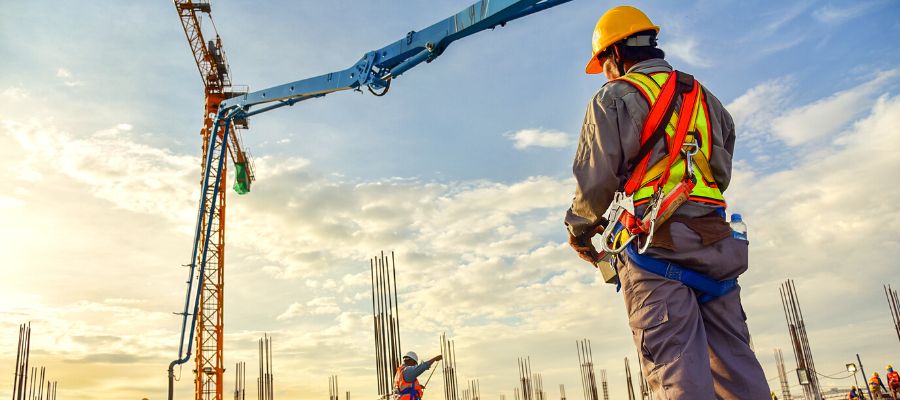The most common struck-by hazards are flying, falling, swinging, and rolling objects. Use this list of tips for preventing struck-by accidents in construction to keep yourself safe.
1. Wear Head Protection
Hard hats are essential personal protective equipment (PPE) because struck-by injuries are one of the most common health risks at construction sites. Hard hats protect workers from falling objects, moving equipment, or stationary objects that workers can bump into. Workers can get traumatic brain injuries, such as concussions, when an object bumps or jolts the head.
The best hard hat for the job depends on the hazards in the environment. Employees wear hard hats when there’s a high risk of objects falling from above, when they might bump their heads onto fixed things, and when employees have an increased risk of making contact with electrical hazards.
2. Tether Tools When Working at Height
Working at height means working at a height great enough that if you fall, you could injure yourself. Working at height includes working on a ladder, scaffolding, roofs, and near an edge.
While the person working at height has an elevated risk of injury from a fall, the people below have a significant struck-by risk. Keep tools and other handheld items attached to yourself or to anchor points. Use tethers, lanyards, and other securing devices to prevent tools and other things from falling on people below.
3. Stay Alert and Communicative
Another tip for preventing struck-by accidents in construction is to stay alert and communicative. Increasing your environmental awareness will help keep you and other people safe.
Never walk near large equipment unless the operator signals it’s safe. Spotters can help direct operators through blind spots. Workers should wear hi-vis gear to help others see them more easily.
Obey signs and signals so you stand and walk in designated safe zones. Listen for alarms and horns so you have enough reaction time to move out of the way.
Stay alert when working near cranes. Never stand under a lifted load. Stay outside the crane’s swing radius, including the movement of the boom, bucket, or cab.

























